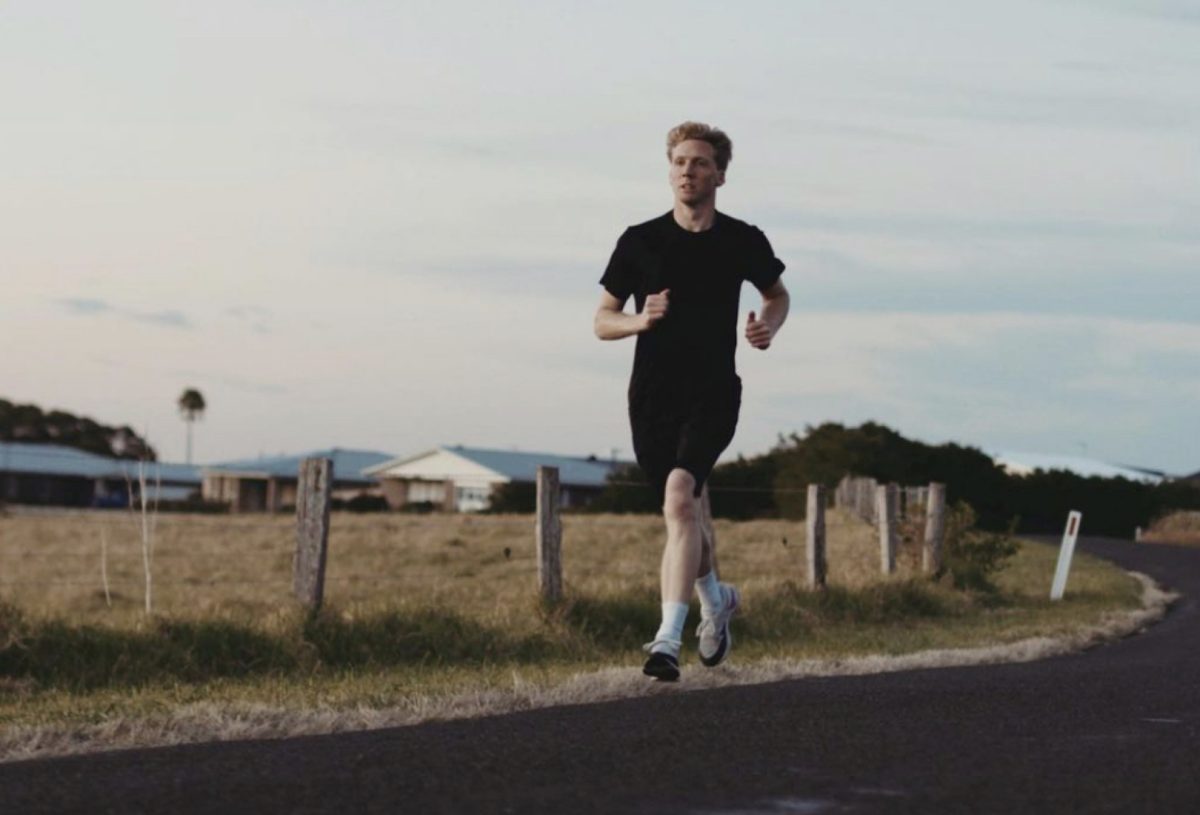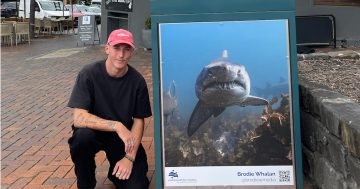
Brett Connellan has set himself a personal challenge to ‘beat the sun’ in a 100-km run on the longest day of the year. Photo: Supplied.
Kiama shark attack survivor Brett Connellan is aiming to ‘beat the sun’ on the longest day of the year, by running 100 km in under 14 hours and 24 minutes – a mammoth 10 hours faster than his last time.
And he’s not afraid to embrace failure.
Almost losing his life when he was attacked by a shark while surfing at Bombo Beach in 2016 at age 22, Brett turned to running after not being able to achieve his goal of becoming a professional surfer after the attack.
His first event was Oxfam Trailwalker in Sydney in 2019.
“That was a really cool experience that was actually the first big physical challenge I’d set myself that was outside of surfing post attack,” he said.
“It was a really cool challenge to undertake, and it was nice to be able to finish it but there was something that always bugged me about our finishing time, which was 25 hours and 19 minutes, which for many people is a very respectable finish time.”
He said he always had in mind to return and do it in less than 24 hours.
That was where the idea for Beat The Sun came from, a personal challenge that will take him from Hawkesbury River to Manly on 22 December, which follows the 2023 Oxfam Trailwalker course.
“I was planning out my goals for the next 12 to 18 months and one thing stuck out to me, which is that of all the things I’ve tried, I haven’t yet properly failed at something,” he said.
“It would be all well and good to go back and try and do it in 23 hours and 59 minutes, but I wanted to set myself something that was a little bit more of a challenge than that, where it really brought in the possibility of failure.”
He said after crunching the numbers for the longest day, which is 14 hours and 25 minutes, he believed it was right on the edge of what was possible.
“It’s an interesting thing to do something where you’re putting yourself in a position where you think failure is a pretty big chance but I’m a pretty driven and motivated individual,” he said.
It was his Kiama psychologist who first told him to “aim higher” as people aimed too low in life and missed their potential.
“I think when I look back, I was obviously fairly ambitious to take on the goal that I had before the attack and at the time of the attack of becoming a professional surfer, but I think it’s one of those things where it’s how you frame those goals most often,” he said.
“For a lot of people, it’s nice to have ambition and it’s nice to have things to look forward to, but when you realise how short life is and how quickly things can change, the frame in which you set those goals tends to be a lot different.
“You no longer set those goals being like, ‘I’ve got my whole life to achieve this.'”
He said previously his only goal was to be a professional surfer.
“Whereas for me now, it is about the consistency of having something that gives me purpose and meaning and direction in my life, which is the big reason as to why I set these ambitious goals,” he said.
Brett said the main reason for sharing the private event publicly was for accountability and knowing that those things could inspire others.
He said he spoke to many about setting ambitious goals, but also being OK with failure as it brought with it resilience and the ability to reassess.
“If I go ahead and I somehow achieve this goal and I complete it in daylight and I beat the sun, then that is something that’s massive, and I can be proud of that,” he said.
“And if I fail, you can bet I’ll be back there maybe the year after with a different approach trying to do it again.
“The reason I do these physical challenges is to not only push myself and give myself a reason to stay fit and healthy, but it is honestly a reason to implement some of the things I contribute to my resilience – the things I learned through my experience through the shark attack and the recovery … but it’s applying that to a different situation.
“I know when it comes to these endurance events, there are those moments where your back’s against the wall and it sucks and it’s terrible and you want to give up.
“It’s about using the things that I’ve learned along the way and putting them in more of a controlled environment, rather than going out there and looking for another event like a shark attack.
“It’s something where I have a bit more control over what the circumstances are.”
Other recent challenges included the mammoth task of producing the Stan documentary, Attacking Life.
Although, he said that aiming to be on a Stan or Netflix for first-time filmmakers was “honestly ridiculous”.
“I felt like we made it as if it was going to land on a big streaming platform,” he said.
“But if we didn’t go into it with that mindset, I don’t think the quality of the film would be where it developed to.”
You can follow the challenge on Facebook.


















